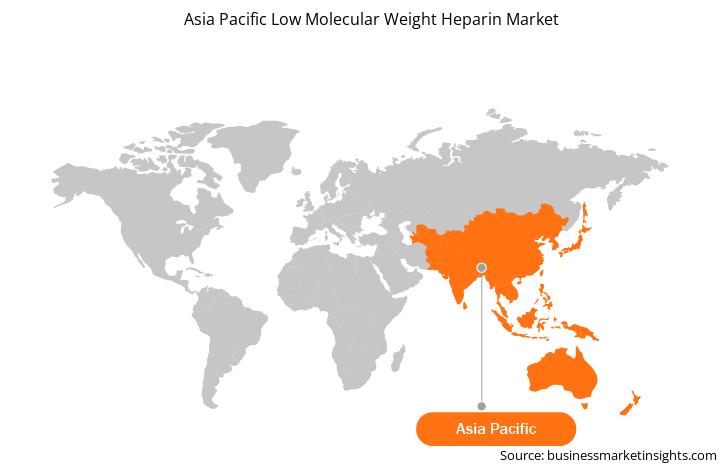Japan, China, South Korea, India, and Australia are the worst-hit countries due to the rising number of COVID-19 cases and related deaths. The economies of India, China, Japan, and South Korea, among others, were hit badly with negative inflation, GDPs, and rising unemployment rates due to the COVID-19 pandemic. The effects of the COVID-19 pandemic have put health data sharing and interoperability under the microscope. The interruptions in supply chains and the massive demand for the efficient treatment of COVID-19 patients have raised critical challenges in the health research industry in Asia Pacific. It has also affected manufacturing, supply chain, and business and financial markets. Medical device manufacturers and suppliers are shifting their focus to developing and supplying COVID-19 essentials and medical devices for respiratory diseases, which affect the operations of the various key players operating in this region. The prevalence of thromboembolism differs significantly between different ethnic and population groups. In Japan, the incidence of VTE is reportedly about one-eighth of North Americans. Hyperhomocysteinemia and elevated levels of Factors I, VIII, and XI are the other possible hereditary risk factors. However, the differences are due to the lack of well-designed studies and non-standardized survey designs. The incidence of VTE in Asian countries has doubled in the past decade. This could be attributed to lifestyle changes, the aging population, and increasing awareness of VTE. Thromboembolism in COVID-19 patients are a major concern for clinicians. A Chinese study conducted on COVID-19 ICU patients reported 46–85.4% DVT incidence. China is expecting a remarkable recovery for NMH, with the resumption of trade operations after the relaxation of lockdown. A review of this list by regulator in China was expected in 2020 but has been practically delayed due to the COVID-19 pandemic.
Strategic insights for the Asia Pacific Low Molecular Weight Heparin provides data-driven analysis of the industry landscape, including current trends, key players, and regional nuances. These insights offer actionable recommendations, enabling readers to differentiate themselves from competitors by identifying untapped segments or developing unique value propositions. Leveraging data analytics, these insights help industry players anticipate the market shifts, whether investors, manufacturers, or other stakeholders. A future-oriented perspective is essential, helping stakeholders anticipate market shifts and position themselves for long-term success in this dynamic region. Ultimately, effective strategic insights empower readers to make informed decisions that drive profitability and achieve their business objectives within the market.

| Report Attribute | Details |
|---|---|
| Market size in 2021 | US$ 756.47 Million |
| Market Size by 2028 | US$ 1,232.57 Million |
| Global CAGR (2021 - 2028) | 7.2% |
| Historical Data | 2019-2020 |
| Forecast period | 2022-2028 |
| Segments Covered |
By Product Type
|
| Regions and Countries Covered | Asia-Pacific
|
| Market leaders and key company profiles |
The geographic scope of the Asia Pacific Low Molecular Weight Heparin refers to the specific areas in which a business operates and competes. Understanding local distinctions, such as diverse consumer preferences (e.g., demand for specific plug types or battery backup durations), varying economic conditions, and regulatory environments, is crucial for tailoring strategies to specific markets. Businesses can expand their reach by identifying underserved areas or adapting their offerings to meet local demands. A clear market focus allows for more effective resource allocation, targeted marketing campaigns, and better positioning against local competitors, ultimately driving growth in those targeted areas.

The Asia Pacific Low Molecular Weight Heparin Market is valued at US$ 756.47 Million in 2021, it is projected to reach US$ 1,232.57 Million by 2028.
As per our report Asia Pacific Low Molecular Weight Heparin Market, the market size is valued at US$ 756.47 Million in 2021, projecting it to reach US$ 1,232.57 Million by 2028. This translates to a CAGR of approximately 7.2% during the forecast period.
The Asia Pacific Low Molecular Weight Heparin Market report typically cover these key segments-
The historic period, base year, and forecast period can vary slightly depending on the specific market research report. However, for the Asia Pacific Low Molecular Weight Heparin Market report:
The Asia Pacific Low Molecular Weight Heparin Market is populated by several key players, each contributing to its growth and innovation. Some of the major players include:
The Asia Pacific Low Molecular Weight Heparin Market report is valuable for diverse stakeholders, including:
Essentially, anyone involved in or considering involvement in the Asia Pacific Low Molecular Weight Heparin Market value chain can benefit from the information contained in a comprehensive market report.